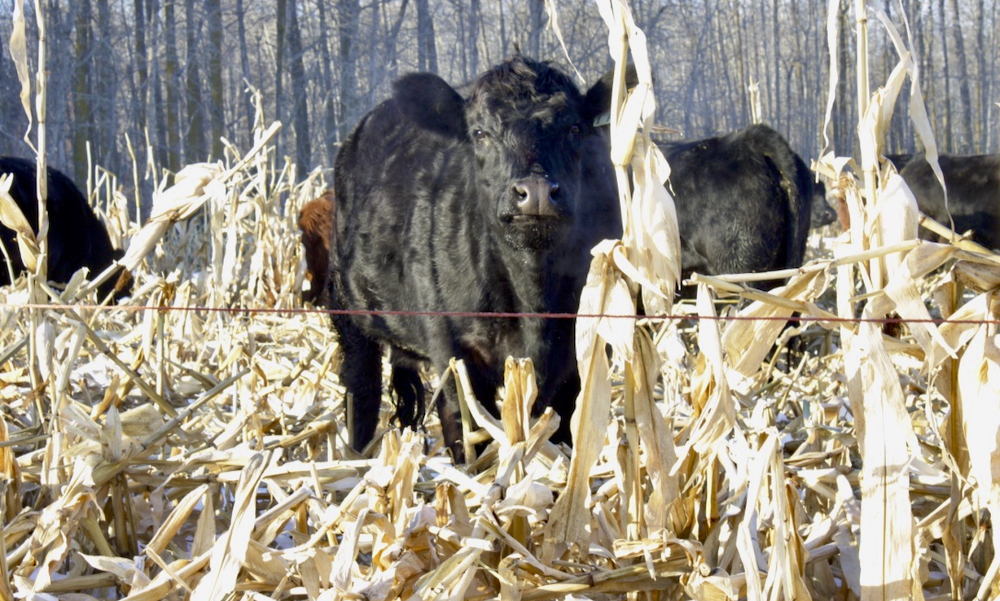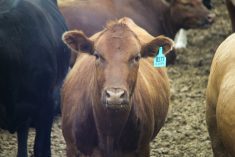Whether feeding in a normal year or through a drought, cattle producers need to look at nutrition from a “40,000-foot vantage point” to make the most of their feed.
“No matter what we’re doing, we’re always striving to get that perfect mix and perfect balance so that everything is used to its optimum,” Barry Yaremcio of Yaremcio Ag Consulting said during a Grey Wooded Forage Association webinar early this month.
“We’re always trying to get an improvement in the overall nutrition of that animal.”
Read Also

Grazing ‘sweet spot’ boosts pasture performance
Timing-focused approach to pasture management touted to boost forage growth, livestock gains while also cutting farmer labour and inputs
The two most limiting factors in a cow’s diet tend to be protein and energy, and those requirements will change depending on where the animal is in the breeding season.
“That’s what makes feeding beef cows so difficult. There’s a lot of variables here,” said Kristen Ritson-Bennett, a ruminant nutritionist at Blue Rock Animal Nutrition and another webinar presenter.
A cow’s greatest requirements are at peak lactation and calving, which generally happens during the winter months in beef cow feeding systems in Alberta. The lowest requirements are at weaning in the late summer and fall.
So when building a ration, it’s important to target a cow’s total digestible nutrients (TDN) at 55 per cent during mid-gestation, 60 per cent at late gestation, and 65 per cent at lactation. There’s a similar strategy for crude protein, with targets of seven per cent, nine per cent, and 11 per cent for each of those different stages.
It’s also important to target less than 60 per cent neutral detergent fibre (NDF), which are the fibre components in the feed.
“For dry-matter intake, we’re aiming for about 2.3 to 2.5 per cent of the body weight,” she said. “But it’s going to limit dry-matter intake if it goes over 60 per cent.”
So in a year like this one, where feed availability is limited, it will be critical to focus on quality — and, of course, that will also be a challenge because of the drought and heat wave.
“Maturity of the plant is certainly going to have an impact (on feed quality),” said Ritson-Bennett. “More mature plants have higher quality. But this year, a lot of fairly immature plants were harvested, and that’s reflected in the feed tests that we’re seeing so far.”
It’s the opposite when grazing crop regrowth, though, added Yaremcio.
“Cereal crops, canola crops, pea crops — almost anything can be grazed,” he said. “The big thing is, the younger the plant material is, the higher the quality.”

But when feeding a crop that’s been stressed by drought (or any other environmental factor), producers need to consider nitrate accumulation in all forage crops and the high sulphur content specific to any canola regrowth.
“Unfortunately when you get over one per cent nitrate, you can have problems with nitrate toxicity,” said Yaremcio. “The most common symptom is that cows are found dead by hypoxia.
“But with proper acclimatization, you shouldn’t have any troubles feeding one per cent nitrate.”
Sulphur, on the other hand, should be kept below 0.4 per cent.
“Bacteria and micro-organisms in the rumen are sensitive to lower pH and die off,” he said, adding that can contribute to issues such as polio in cattle.
“There are some reports that say that high-forage rations can be fed up to 0.55 per cent sulphur, but if I want to sleep at night, I usually keep it at 0.4 per cent.”
Supplementing feed
Beyond that, it’s important to consider which feed alternatives will have the best fit on the farm.
“This year what we’re finding is that a lot of people are being forced to use straw or other material that is generally considered to be lower-quality protein than normal, but some of the options we have available are peas, lentils, and corn or wheat distillers grains,” said Yaremcio.
“Granted the price is high, but they’re all up in the 20 to 30 per cent protein range and the energy contents are good.”
Cows can eat “any kind of fibre, as long as it’s balanced,” he added.
“You have to keep the rumen healthy and functioning properly. It does not mean you have to feed hay or silage at 100 per cent of the ration.”
Oats, super oats, barley, wheat, triticale, and corn can all be used to supplement energy requirements.
“They’re all really good options, but we have to evaluate the cost of these things,” said Ritson-Bennett. “So what I did this year — and I probably reinvented the wheel — was break it out so that I could easily and quickly identify what was the best value for my money.”
The first step is identifying what you actually need — protein or energy.
“You have to look at it from a value per pound of energy or protein,” she said. “In this case, corn is the cheapest form of energy, but it’s the most expensive form of protein. So if you needed protein on farm, corn would not be your best choice.”
That’s where feed testing comes in, and in a year like this one, that will be more critical than ever.
“I sure like taking the guesswork out of it. I hate guessing,” said Ritson-Bennett, adding that it’s important to take representative samples and ask to include tests for sulphur, nitrate, ergot, and other potential issues in the feed.
“If you’ve feed tested, you can evaluate which commodity is going to be best suited for your farm. It’s not going to be the same everywhere — it’s really going to depend on your operation. But if we have some parameters to work around, that’s definitely helpful.
“We can meet the requirements of the animal at whatever stage she’s in and identify problems, whether that’s mycotoxins, nitrates, sulphates, mineral imbalances, or an energy or protein shortfall. At the end of the day, that’s going to save you money, so why wouldn’t you do it?”















